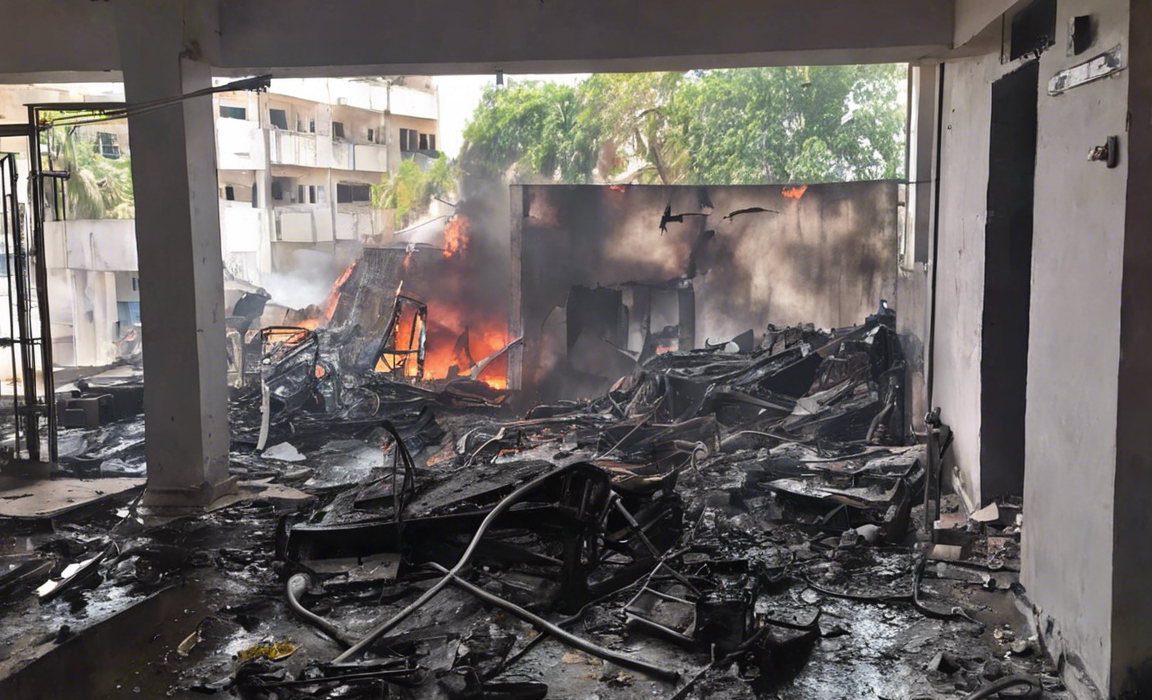The recent fire incident at Ankura Hospital in Hyderabad has once again highlighted the importance of disaster preparedness and recovery in healthcare facilities. The devastating effects of such emergencies can be mitigated with proper planning, training, and execution of response protocols. In this post, we will delve into the Ankura Hospital Hyderabad Fire incident, analyzing the factors that led to the disaster, the response efforts, and the recovery process that follows. We will also explore key takeaways and best practices for hospitals and healthcare facilities to enhance their disaster management strategies.
Factors Leading to the Fire
The Ankura Hospital fire in Hyderabad was reportedly caused by a short circuit in the air conditioning system of the intensive care unit (ICU). The rapid spread of the fire was exacerbated by flammable materials in the vicinity, inadequate fire safety measures, and a lack of proper evacuation protocols.
Lack of Fire Safety Measures
One of the primary factors contributing to the severity of the fire was the inadequate fire safety measures in place at the hospital. This includes insufficient fire detection systems, lack of proper fire extinguishers, and failure to conduct regular fire safety drills.
Flammable Materials in the ICU
The presence of flammable materials in the ICU, such as medical supplies, equipment, and furnishings, accelerated the spread of the fire and contributed to the overall damage caused by the incident.
Evacuation Challenges
The hospital’s lack of clear evacuation procedures and training for staff and patients further complicated the situation, leading to delays in evacuating individuals from the affected areas.
Response Efforts
Upon the outbreak of the fire, emergency response teams were deployed to the scene to contain the blaze and rescue individuals trapped in the building. The timely intervention of firefighting units and medical personnel helped minimize casualties and prevent further damage.
Firefighting Operations
Firefighters worked tirelessly to extinguish the flames and prevent the fire from spreading to other parts of the hospital. Their efforts were instrumental in bringing the situation under control and preventing a larger catastrophe.
Medical Response
Medical teams mobilized quickly to treat injured patients and ensure their safe transfer to nearby healthcare facilities for further care. The coordination between emergency services and healthcare providers was critical in managing the aftermath of the incident.
Recovery Process
In the aftermath of the Ankura Hospital fire, the focus shifted towards the recovery and restoration of operations at the facility. The recovery process involves a series of steps aimed at rebuilding infrastructure, addressing safety concerns, and resuming healthcare services for the community.
Infrastructure Assessment
A thorough assessment of the structural integrity of the hospital building is essential to identify areas that require repairs or reconstruction. This involves inspecting electrical systems, ventilation, and other key components to ensure they meet safety standards.
Safety Upgrades
Implementing enhanced fire safety measures, such as installing advanced fire detection systems, upgrading sprinkler systems, and conducting regular safety audits, is crucial to prevent future incidents and protect the lives of patients and staff.
Staff Training
Training hospital personnel in emergency response protocols, evacuation procedures, and fire safety practices is essential to ensure that they are prepared to handle crisis situations effectively. Regular drills and training sessions help reinforce these skills and improve overall readiness.
Key Takeaways and Best Practices
The Ankura Hospital fire serves as a stark reminder of the importance of robust disaster preparedness and response mechanisms in healthcare settings. Implementing the following best practices can help hospitals enhance their resilience to emergencies:
- Conduct Regular Risk Assessments: Identify potential fire hazards and risks within the facility and take proactive measures to mitigate them.
- Invest in Fire Safety Equipment: Ensure the availability of adequate fire extinguishers, alarms, and suppression systems throughout the hospital premises.
- Develop Comprehensive Emergency Plans: Create detailed emergency response plans that outline roles and responsibilities, evacuation procedures, and communication protocols.
- Train Staff and Conduct Drills: Provide regular training to staff members on emergency procedures and conduct mock drills to test their preparedness.
- Collaborate with Emergency Services: Establish partnerships with local emergency services for prompt coordination and support during crisis situations.
Frequently Asked Questions (FAQs)
-
What caused the fire at Ankura Hospital in Hyderabad?
The fire at Ankura Hospital in Hyderabad was caused by a short circuit in the air conditioning system of the ICU. -
How were the patients and staff evacuated during the fire incident?
The evacuation process involved the coordinated efforts of hospital staff, emergency responders, and volunteers to safely evacuate individuals from the building. -
What were some of the challenges faced during the recovery process?
Challenges during the recovery process included assessing structural damage, implementing safety upgrades, and resuming healthcare services while ensuring patient safety. -
How can hospitals improve their fire safety measures to prevent such incidents?
Hospitals can enhance their fire safety measures by investing in advanced detection systems, conducting staff training, and adhering to strict safety protocols. -
What role do emergency response teams play in managing fire incidents at hospitals?
Emergency response teams play a crucial role in containing fires, evacuating individuals, providing medical assistance, and coordinating recovery efforts during hospital fire incidents.
In conclusion, the Ankura Hospital Hyderabad fire underscores the critical need for hospitals to prioritize disaster preparedness and response planning to safeguard the well-being of patients, staff, and visitors. By learning from past incidents, implementing best practices, and fostering a culture of safety, healthcare facilities can enhance their resilience to emergencies and mitigate the impact of future disasters.


